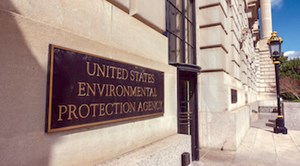Lead found in U.S. Virgin Islands drinking water prompts EPA recommendations
(UI) – As part of its continuing partnership with the U.S. Virgin Islands government to address lead identified in the water distribution system of St. Croix, the EPA has concluded its sequential sampling study and made a series of preliminary recommendations to its partners.
Initial samples taken in September by EPA, the Department of Planning and Natural Resources (DPNR), the University of the Virgin Islands and the Virgin Islands Water and Power Authority (WAPA) at water distribution meters showed alarming levels of lead, but subsequent sampling data analyzed by EPA experts indicate the levels of lead at household taps are far lower than those found at the distribution meters.
EPA has developed a preliminary list of recommended actions that the U.S. Virgin Islands government should take, including educating residents on steps they themselves can take at home to reduce exposure to lead, as well as improving the water system’s corrosion control treatment and replacing components that contain lead in the distribution system.
Of the 119 samples collected for the sequential sampling study at the 11 homes, three samples showed levels above the EPA’s 15 parts per billion (ppb) Lead Action Level. Two of those samples were from the first draw closest to the tap (28.8 ppb; 18.4 ppb); the third was from water closer to the meter (23.2 ppb).
The two first-draw results, closest to the tap, indicate the lead is likely stemming from the local plumbing within the faucet or the aerator; the third result, closer to the distribution meter, indicates the lead is likely stemming from the lead plumbing components in and around the distribution meter. The home with elevated lead closer to the distribution meter had a stagnation time of four days, versus the other homes with a six-hour stagnation, which may account for the lead levels in that sample.
“What we initially saw from samples collected in September showed very high levels of lead. While those samples were not from a part of the water system that is normally sampled, EPA and the Virgin Islands government had a responsibility to take decisive action and investigate the situation further,” said EPA Regional Administrator Lisa F. Garcia.
Garcia added, “The levels of lead we have been seeing in subsequent sampling, including our detailed sequential sampling study, are much lower than those initial samples. But they do show some lead. This confirms the need to ensure that proper steps are being taken by the water provider and by consumers to protect people and reduce the potential exposure to lead.”
As part of its work with the USVI government to better understand the contents of the red and brown water seen coming out of household taps on St. Croix, EPA analyzed samples taken at distribution meters to determine their metal content. These results showed high levels of lead and copper, prompting immediate action from both EPA and the U.S. Virgin Islands government.
After examining the results of a November sequential sampling study and considering data generated from sampling since September, EPA is working closely with the Virgin Islands government to lay a path to lift the recommendation that people on St. Croix not consume WAPA water from the distribution system.
Levels of lead that were found at the private home taps during EPA’s sampling study are consistent with levels seen in other communities across the country. While no level of lead is safe, there are practical steps that people can take to reduce their exposure to lead from their household water. These include flushing their pipes before consuming water, regularly cleaning their aerators (faucet screen) to remove sediment and debris, and properly using and maintaining a water filter certified to remove lead.
Before residents begin to consume water from the WAPA distribution system again, EPA is requesting that USVI regulatory agencies and WAPA develop and implement a comprehensive plan to educate the public about steps they can take to reduce their exposure to lead in drinking water.
EPA also recommends that WAPA address the lead from the distribution system, including optimizing corrosion control on St. Croix and replacing components containing lead in the distribution system. The U.S. Virgin Islands is already beginning to undertake EPA’s recommendations.
The local and subsequent federal emergency declarations are focused on lead. While the red/brown discoloration issues with the water may not indicate an immediate health threat, EPA recognizes that these issues are still serious and need attention. Some of the measures being undertaken to reduce lead both by consumers and by the system may also help the red and brown discoloration, and EPA will continue to consult with the U.S Virgin Islands to address that problem.
Related News
From Archive

- Glenfarne Alaska LNG targets late-2026 construction start for 807-mile pipeline project
- U.S. water reuse boom to fuel $47 billion in infrastructure spending through 2035
- $2.3 billion approved to construct 236-mile Texas-to-Gulf gas pipeline
- Major water pipe break in Puerto Rico hits over 165,000 customers
- Potomac River Tunnel project enters construction phase beneath Washington, D.C.
- Pennsylvania American Water launches interactive map to identify, replace lead water service lines
- Trump's tariffs drive $33 million cost increase for Cincinnati sewer project
- Utah city launches historic $70 million tunnel project using box jacking under active rail line
- Tulsa residents warned after sewer lines damaged by boring work
- Fatal trench collapse halts sewer construction in Massachusetts; two workers hospitalized




Comments